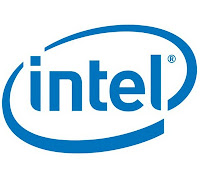The 34th TOP500 List released November 17th in Portland, Oregon at the SC09 Conference.
A PDF version of the TOP500 Report distributed during SC09 can be found here.
In its third run to knock the IBM supercomputer nicknamed “Roadrunner” off the top perch on the TOP500 list of supercomputers, the Cray XT5 supercomputer known as Jaguar finally claimed the top spot on the 34th edition of the closely watched list.
Jaguar, which is located at the Department of Energy’s Oak Ridge Leadership Computing Facility and was upgraded earlier this year, posted a 1.75 petaflop/s performance speed running the Linpack benchmark. Jaguar roared ahead with new processors bringing the theoretical peak capability to 2.3 petaflop/s and nearly a quarter of a million cores. One petaflop/s refers to one quadrillion calculations per second.
Kraken, another upgraded Cray XT5 system at the National Institute for Computational Sciences/University of Tennessee, claimed the No. 3 position with a performance of 832 teraflop/s (trillions of calculations per second).
At No. 4 is the most powerful system outside the U.S. -- an IBM BlueGene/P supercomputer located at the Forschungszentrum Juelich (FZJ) in Germany. It achieved 825.5 teraflop/s on the Linpack benchmark and was No. 3 in June 2009.
Rounding out the top 5 positions is the new Tianhe-1 (meaning River in Sky) system installed at the National Super Computer Center in Tianjin, China and to be used to address research problems in petroleum exploration and the simulation of large aircraft designs. The highest ranked Chinese system ever, Tianhe-1 is a hybrid design with Intel Xeon processors and AMD GPUs used as accelerators. Each node consists of two AMD GPUs attached to two Intel Xeon processors.
Wednesday, November 18, 2009
Tuesday, November 10, 2009
What to do with an old nuclear silo?
Question: What to do with a 36 feet wide by 65 feet high nuclear grade silo with 2 feet thick concrete walls ?
Answer: An HPC Center!
A supercomputing center in Quebec has transformed a huge concrete silo into the CLUMEQ Colossus, a data center filled with HPC clusters.
The silo, which is 65 feet high with two-foot thick concrete walls, previously housed a Van de Graaf accelerator dating to the 1960s. It was redesigned to house three floors of server cabinets, arranged so cold air can flow from the outside of the facility through the racks and return via an interior 'hot core'. The construction and operation of the unique facility are detailed in a presentation from CLUMEQ.
Link: http://www.datacenterknowledge.com/archives/2009/12/10/wild-new-design-data-center-in-a-silo/
(This news sourced from the slashdot.com)
Answer: An HPC Center!
A supercomputing center in Quebec has transformed a huge concrete silo into the CLUMEQ Colossus, a data center filled with HPC clusters.
The silo, which is 65 feet high with two-foot thick concrete walls, previously housed a Van de Graaf accelerator dating to the 1960s. It was redesigned to house three floors of server cabinets, arranged so cold air can flow from the outside of the facility through the racks and return via an interior 'hot core'. The construction and operation of the unique facility are detailed in a presentation from CLUMEQ.
Link: http://www.datacenterknowledge.com/archives/2009/12/10/wild-new-design-data-center-in-a-silo/
(This news sourced from the slashdot.com)
Subscribe to:
Comments (Atom)
Intel stretches HPC dev tools across chubby clusters
SC11 Supercomputing hardware and software vendors are getting impatient for the SC11 supercomputing conference in Seattle, which kick...

-
* 1. Install RHEL 5.1 x86_64 Server * 2. install openldap server and client RPMs rpm -qa | grep -i openldap must be show o...
-
One such popular defense tool is a virtual world game called Boarders Ahoy!. Developed by NATO's Allied Command Transformation, the tra...
-
SC11 Supercomputing hardware and software vendors are getting impatient for the SC11 supercomputing conference in Seattle, which kick...






